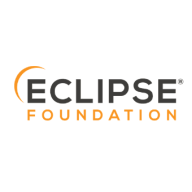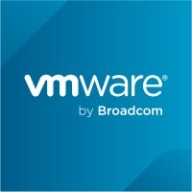

Spring Boot and Eclipse MicroProfile are solutions for microservices architecture in Java. Spring Boot has an advantage in community support and ease of integration, while Eclipse MicroProfile benefits from open standards and interoperability.
Features: Spring Boot offers auto-configuration, a standalone executable format, and simplifies the development process with its wide range of features and robust integration capabilities. Eclipse MicroProfile optimizes enterprise Java applications with API standards for configuration, metrics, and fault tolerance, prioritizing standardization and portability.
Ease of Deployment and Customer Service: Spring Boot provides a straightforward deployment model with comprehensive documentation and active community support, facilitating troubleshooting. Eclipse MicroProfile's deployment can be complex due to Java EE reliance but benefits from strong API documentation and standardized solutions.
Pricing and ROI: Both Spring Boot and Eclipse MicroProfile are open-source, with Spring Boot offering low initial setup costs and quick deployment, enhancing ROI. Eclipse MicroProfile offers cost benefits but may need more investment in understanding API standards, potentially impacting ROI compared to Spring Boot's ease of use.
| Product | Market Share (%) |
|---|---|
| Spring Boot | 38.9% |
| Eclipse MicroProfile | 6.9% |
| Other | 54.2% |


| Company Size | Count |
|---|---|
| Small Business | 19 |
| Midsize Enterprise | 8 |
| Large Enterprise | 17 |
Many innovative "microservice" Enterprise Java environments and frameworks already exist in the Java ecosystem. These projects are creating new features and capabilities to address microservice architectures -- leveraging both Java EE and non-Java EE technologies.
The goal of the Eclipse MicroProfile project is to iterate and innovate in short cycles to propose new common APIs and functionality, get community approval, release, and repeat. Eventually, the outputs of this project could be submitted to the Eclipse Jakarta EE, JCP, OpenJDK or any relevant standards body.
Spring Boot is a tool that makes developing web applications and microservices with the Java Spring Framework faster and easier, with minimal configuration and setup. By using Spring Boot, you avoid all the manual writing of boilerplate code, annotations, and complex XML configurations. Spring Boot integrates easily with other Spring products and can connect with multiple databases.
How Spring Boot improves Spring Framework
Java Spring Framework is a popular, open-source framework for creating standalone applications that run on the Java Virtual Machine.
Although the Spring Framework is powerful, it still takes significant time and knowledge to configure, set up, and deploy Spring applications. Spring Boot is designed to get developers up and running as quickly as possible, with minimal configuration of Spring Framework with three important capabilities.
Reviews from Real Users
Spring Boot stands out among its competitors for a number of reasons. Two major ones are its flexible integration options and its autoconfiguration feature, which allows users to start developing applications in a minimal amount of time.
A system analyst and team lead at a tech services company writes, “Spring Boot has a very lightweight framework, and you can develop projects within a short time. It's open-source and customizable. It's easy to control, has a very interesting deployment policy, and a very interesting testing policy. It's sophisticated. For data analysis and data mining, you can use a custom API and integrate your application. That's an advanced feature. For data managing and other things, you can get that custom from a third-party API. That is also a free license.”
Randy M., A CEO at Modal Technologies Corporation, writes, “I have found the starter solutions valuable, as well as integration with other products. Spring Security facilitates the handling of standard security measures. The Spring Boot annotations make it easy to handle routing for microservices and to access request and response objects. Other annotations included with Spring Boot enable move away from XML configuration.”
We monitor all Java Frameworks reviews to prevent fraudulent reviews and keep review quality high. We do not post reviews by company employees or direct competitors. We validate each review for authenticity via cross-reference with LinkedIn, and personal follow-up with the reviewer when necessary.